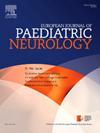肢体带状肌营养不良症(LGMD)患者的人口统计学、临床和遗传特征:单一三中心经验
IF 2.3
3区 医学
Q3 CLINICAL NEUROLOGY
引用次数: 0
摘要
鉴于在土耳其人群中很少发现与肢体带状肌营养不良症(LGMD)相关的致病变异,我们的目标是表征与发病年龄、家族特征、最终临床状态和肌肉活检结果相关的LGMD致病遗传变异。材料和方法我们回顾性评估了通过遗传和/或肌肉活检确诊的成年LGMD患者,这些患者在Izmir Tepecik培训和研究医院肌肉疾病中心接受了随访。我们在MiSeq平台(illinois, USA)上使用新一代测序方法对从外周血中获得的DNA样本进行LGMD基因检测。在GnomAD或ExAC数据库中使用<;0.01的小等位基因频率来过滤重要的变异。然后进行桑格测序来验证这些发现。用SIFT、polyphen2、provan或CADD对错义致病基因进行功能预测。结果69例患者共检出13种LGMD亚型。其中男性28例,女性41例。平均发病年龄为14.98岁(最小1岁,最大30岁)。69例患者中有51例(71.6%)有血缘关系。我们的研究包括23个患者类型R1 (calpainopathy), 16型R2 (dysferlinopathy),八个R3型(αsarcoglycanopathy),两个R4型(βsarcoglycanopathy)、7型R5(γsarcoglycanopathy)、五型R7 (telethoninopathy),一个R8型(TRIM32),一个型R9机型(dystroglycanopathy),一个R10型(titinopathy),一个R11 (POMT1)型两型R12 (anoctamin 5),一个R14型(POMT2),另一人原为R18型(神经病变)。结论遗传诊断对LGMD的重要性日益增加,特别是由于该领域的治疗方法正在开发,有望真正治疗该病。这项研究增加了LGMD流行病学的新模式,表明由已知致病基因解释的LGMD比例高于先前报道的比例。本文章由计算机程序翻译,如有差异,请以英文原文为准。
Demographic, clinical, and genetic characteristics of patients with Limb-Girdle Muscular Dystrophies (LGMD): A single tertiary-center experience
Objective
Given that pathogenic variants related to limb-girdle muscular dystrophies (LGMD) are rarely found in Turkish populations, we aim to characterize pathogenic genetic variants of LGMD associated with age of disease onset, family characteristics, final clinical status, and muscle biopsy findings.
Materials and methods
We retrospectively evaluated adult patients with LGMD whose diagnoses were confirmed by genetic and/or muscle biopsy and who were being followed up in the Muscle Diseases Center of Izmir Tepecik Training and Research Hospital. We tested for LGMD genes on the DNA sample obtained from peripheral blood using the next-generation sequencing method on the MiSeq Platform (Illimunia, USA). A minor allele frequency of <0.01 in the GnomAD or ExAC database was used to filter for significant variants. Sanger sequencing was then conducted to validate the findings. Function prediction by SIFT, PolyPhen-2, and PROVEAN or CADD was carried out in missense pathogenic genes.
Results
A total of 13 LGMD subtypes were identified in 69 patients. Twenty-eight of the patients were male, and 41 were female. The mean age at disease onset was 14.98 years (minimum 1 year, maximum 30 years). Consanguinity was found in 51 (71.6 %) of the 69 patients. Our study included 23 patients with type R1 (calpainopathy), 16 with type R2 (dysferlinopathy), eight with type R3 (alpha sarcoglycanopathy), two with type R4 (beta sarcoglycanopathy), seven with type R5 (gamma sarcoglycanopathy), five with type R7 (telethoninopathy), one with type R8 (TRIM32), one with type R9 (dystroglycanopathy), one with type R10 (titinopathy), one with type R11 (POMT1), two with type R12 (anoctamin 5), one with type R14 (POMT2), and one with formerly type R18 (desminopathy).
Conclusion
The importance of genetic diagnosis for LGMD is increasing, especially because treatment methods are being developed in this field that hold promise for truly treating the disease. This study adds to the emerging pattern of LGMD epidemiology demonstrating that the proportion of LGMD explained by known pathogenic genes is higher than that previously reported.
求助全文
通过发布文献求助,成功后即可免费获取论文全文。
去求助
来源期刊
CiteScore
6.30
自引率
3.20%
发文量
115
审稿时长
81 days
期刊介绍:
The European Journal of Paediatric Neurology is the Official Journal of the European Paediatric Neurology Society, successor to the long-established European Federation of Child Neurology Societies.
Under the guidance of a prestigious International editorial board, this multi-disciplinary journal publishes exciting clinical and experimental research in this rapidly expanding field. High quality papers written by leading experts encompass all the major diseases including epilepsy, movement disorders, neuromuscular disorders, neurodegenerative disorders and intellectual disability.
Other exciting highlights include articles on brain imaging and neonatal neurology, and the publication of regularly updated tables relating to the main groups of disorders.

 求助内容:
求助内容: 应助结果提醒方式:
应助结果提醒方式:


